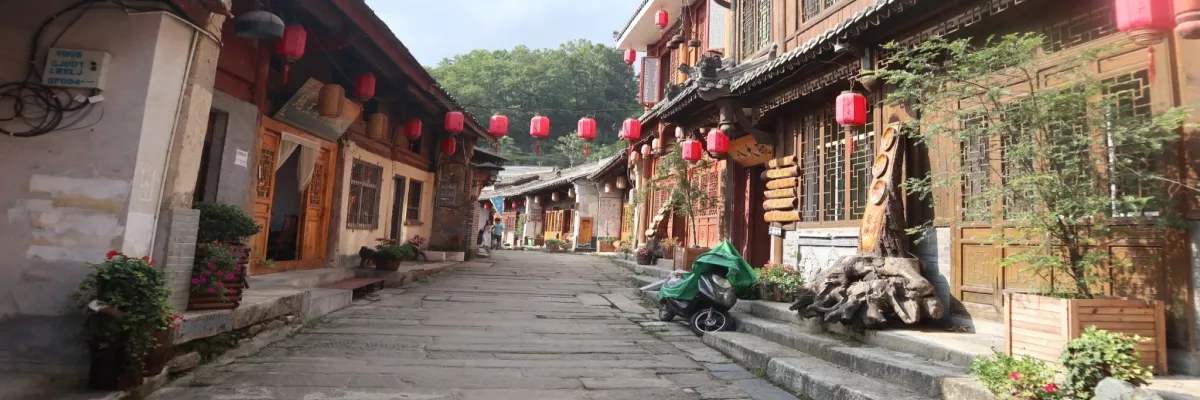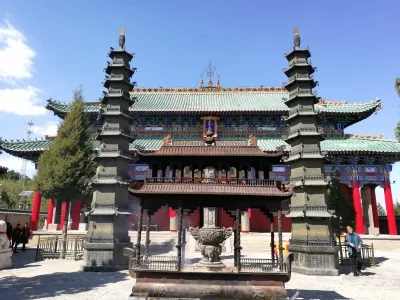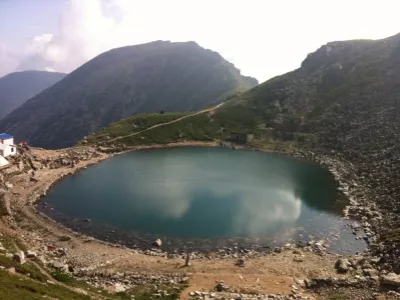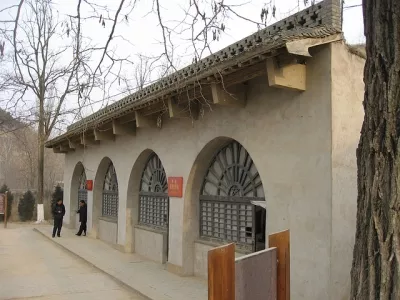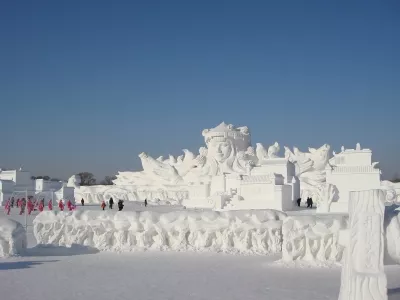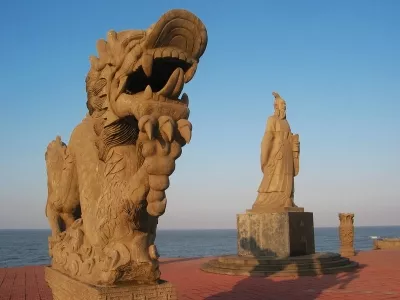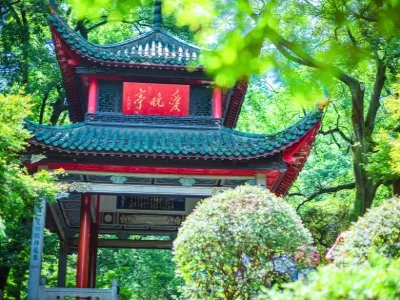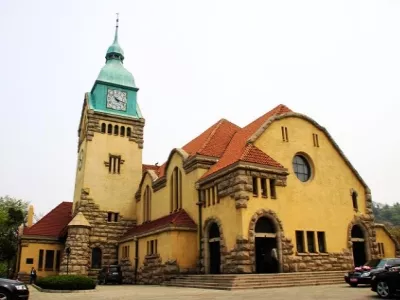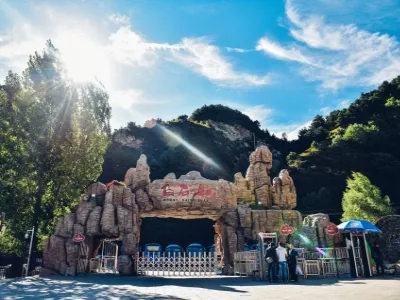Hanzhong is located in the southwest of Shaanxi Province, along the upper reaches of the Han River. It is bordered by the Qinling Mountains to the north and the Daba Mountains to the south, with high terrain in the north and south and lowlands in the middle where the Hanzhong Basin lies. It administers Hantai District and the 10 counties of Zhenba, Liuba, Mian, Xixiang, Nanzheng, Chenggu, Ningqiang, Yangxian, Foping and Lueyang.
Hanzhong is abundant in flora and fauna. The crested ibis, giant panda, golden snub-nosed monkey and takin that inhabit the Hanzhong Basin south of the Qinling Mountains have long been known as the "Four Hanzhong Treasures".
Hanzhong Rapeseed Flower Tourism Culture Festival
Around China's Qingming Festival in early April, vibrant yellow rapeseed flowers blanket the fields and hillsides of Hanzhong. To celebrate the scenic blooms, the city hosts the annual Hanzhong Rapeseed Flower Tourism and Culture Festival each March. Though dates vary slightly each year, the festival coincides with the peak bloom period which lasts about a month starting in mid-March. Visitors can immerse themselves in the floral landscapes along with traditional activities like tea harvesting and production demonstrations, folk song competitions, art exhibits, photography shows, and cultural performances. With lush yellow fields set against mountain backdrops, Hanzhong offers stunning spring scenery. Meandering through the rapeseed flowers by foot or partaking in the many cultural events provides a glimpse into Hanzhong’s agricultural heritage and vibrant local traditions. Check the city's official website for details on specific timing and locations each year.
Wuhou Tomb Qingming Culture Temple Fair
The Wuhou Temple Tomb Sweeping Festival is the largest ancient cultural fair in Southern Shaanxi, with nearly 1,000 years of history. Held annually around China’s Qingming Festival in early April, people in Mian County gather at the temple to pay tribute to Zhuge Liang, the famous ancient Chinese statesman. In addition to memorial ceremonies, the festival features diverse cultural activities including theater, film screenings, acrobatics, song and dance, amusement parks, exhibitions, and folk arts performances. The lively festivities provide a window into time-honored customs, entertainment forms, and local culture. Visitors can experience traditional tomb sweeping rituals alongside modern celebrations that honor the legacy of this revered historical figure. As one of the grandest temple fairs in the region, the Wuhou Temple Tomb Sweeping Festival offers an immersive experience of enduring Chinese heritage.
Hanzhong Tea Party
The art of Dou Cha, or tea fighting, has been an integral part of Chinese tea culture since the Tang Dynasty. Many parts of China hold tea plucking and fighting competitions, and in the springtime, Luozhen Town in Hanzhong's Xixiang County hosts a major Dou Cha tournament. Luozhen is renowned as the most famous tea-producing area in the Bashan region, and each tea farmer boasts their own unique tea processing mastery. During the festival, spectators can witness magnificent scenes of farmers picking tea in the fields. The highlight is when competitors face off to determine whose tea is the best quality, with judging based on color, aroma, flavor, and other characteristics. Beyond honing skills, the festival aims to preserve China's age-old tradition of tea fighting and production. Visitors can experience first-hand this iconic part of Chinese heritage and appreciate the craftsmanship that goes into growing China's most beloved beverage. Check the local official website for specific dates each April.
Hanzhong snacks on the tip of the tongue
Four quintessential snacks represent the culinary soul of Hanzhong: mianpi, cai doufu, jiangshu mian, and fenpi. These long-cherished local specialties offer a delicious taste of the region's distinct flavors. The springy, toothsome noodles of mianpi, the refreshing herb-infused cai doufu, the tangy soups of jiangshu mian, and the smooth, chewy skins of fenpi have satisfied Hanzhong locals for generations. When visiting the area, be sure to sample these snacks from street stalls and restaurants to appreciate the diverse textures and flavors that define Hanzhong cuisine. Let the bouncy bite of mianpi, the chill crunch of cai doufu's vegetables, the sour warmth of jiangshu mian broth, and the slippery wrapper of fenpi tantalize your tastebuds. Immerse your senses in the sights, aromas, and unforgettable tastes that locals have treasured for ages. Treat yourself to these four delicacies for a fulfilling snacking adventure unique to Hanzhong.
Scenery Encountered Unexpectedly on the Journey
For the quintessential Hanzhong experience, consider a relaxed road trip to soak up the area's natural beauty. Driving grants the freedom to stray from rigid schedules and seek out surprises along the open road. Meander along winding rural routes to stumble upon vibrant flower fields, farmers tending rice paddies, or locals selling produce at roadside stands. Pull over on a whim to photograph the mist-veiled mountains emerging in the distance or wander trails through bamboo groves leading to hidden temples. Savor leisurely roadside lunches of local noodles before venturing down untrodden paths. Let each day unfold on its own terms, chasing spontaneity. Keep your eyes peeled for glimpses of traditional architecture and crafts in sleepy villages. With flexibility and curiosity, a self-driven tour allows you to immerse yourself in Hanzhong's countryside and encounter heartwarming moments that mass tourism may miss. Ramble freely to let the region's charms reveal themselves.
History
Hanzhong has a long and rich history, serving as the ancestral home of the Han dynasty. During the Xia and Shang dynasties, Hanzhong was known as Liangzhou, one of the Nine Provinces. Since 312 BC when King Huiwen of Qin first established Hanzhong Commandery, one of Qin's 36 commanderies, Hanzhong has boasted over 2,300 years of history. In 206 BC, Liu Bang, King of Han, chose Hanzhong as his ancestral home, erected an altar there to appoint Han Xin as a general, and stealthily crossed Chencang to defeat his rivals, unify the Three Qin states, and establish the over 400-year reign of the Han Dynasty. Since then, Han culture, Han people, Han ethnicity, the Han language, and Han customs have endured. During the Three Kingdoms period, Hanzhong was the main battlefield between Wei and Shu. Old general Huang Zhong slayed Xiahou Yuan at Dingjun Mountain while young Zhao Yun greatly defeated Cao Cao's forces along the Han River. Liu Bei proclaimed himself King of Hanzhong here. The great strategist Zhuge Liang garrisoned troops in Hanzhong for 8 years and embarked on 6 northern expeditions against Cao Wei before being buried at Dingjun Mountain, home to the renowned Wuhou Temple ("Number One Temple in the World"). Hanzhong is the hometown of Zhang Qian who pioneered the Silk Road, the fiefdom and burial place of Cai Lun who invented papermaking, and the burial place of Wei Yan. Many emperors, generals, ministers and poets like Han Xin, Zhuge Liang, Cao Cao, Li Bai, Du Fu, Lu You and Su Shi left their mark here.
